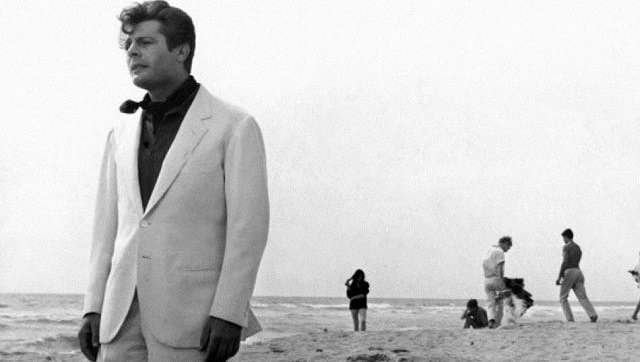

He stops being apologetic for what he is doing and rather vociferously defends his work. He is setting the tone of the party rather than being flowed by it. When he finally abandons the intellectual path that Steiner had taken, he becomes more confident. When Marcello ‘aspires’ to be like Steiner, he is always sad and worried. On the other hand, every other party that Marcello attends, people are laughing, dancing, cracking silly jokes, ‘connecting’ with each other and are genuinely happy (at least in that moment).) (This is contrasted with Steiner’s party where people discuss poetry and philosophy, yet he is morose and distant. That, it’s okay to be silly at times and utter words that don’t always have gravitas. This need to ‘read books’, ‘play piano’, ‘have a perfect family’, without actually pausing and calibrating inner needs can leave people disoriented and frustrated. One way to look at the film could be that it shows how lofty intellectualism can burn people out. “The destruction of high-minded dreams, the destruction of intellectualism, the destruction of ideals” I hope I will have enough sense left to have the capacity and opportunity to plan and organise it.” For me, that would be a completely natural end. A soul slowly dying out, trapped in a body in which the insides gradually sabotage me I think that would be terrible.” Suicide, he said, would be the only option in such a case. “The thing I consider appalling would be to suddenly become a vegetable and a burden on other pe ople.


That I will never meet Ingrid again feels devastating.” Bergman called it “the grimmest thing that happened in my life. But seven years earlier, a report in The Guardian stated that the death of his wife from stomach cancer had left the great filmmaker depressed and made him contemplate suicide. I ngmar Bergman died the best possible way, in 2007: peacefully, in his sleep.

Fittingly, ‘La Dolce Vita’ also gave us the word “paparazzi” in the intrusive, invasive sense we recognise it today. These experiences were vividly captured in his book Rome, which has been re-published to celebrate its 50th anniversary.How prescient this film seems from today, from this world around us where sensationalism is everything. Often he would be in the company of Fellini or others, including Pier Paolo Pasolini or the writer Alberto Moravia. "People came to Rome to see two people – the Pope and Fellini." Lack of funding delayed filming, so Klein turned his camera on the city, photographing the people and places from Via Veneto and St Peter's Square to desolate areas ravaged by war. "Fellini was the only game in town," says Klein. Fresh from acclaim for his unconventional images of the streets of New York, Klein, then 28, had come to Rome from his Paris home to assist Fellini on his earlier film, Nights of Cabiria. One man was lucky enough to experience this "sweet life" with Fellini in the 1950s and early 1960s – William Klein, the American photographer and film-maker. Ever since Anita Ekberg frolicked under the waters of Rome's Trevi Fountain in La Dolce Vita, the phrase and the city have become synonymous with the film's director, Federico Fellini.


 0 kommentar(er)
0 kommentar(er)
